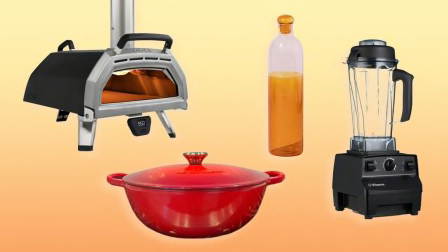Best Milk Frothers
We tried six models from Aerolatte, Bodum, Capresso, Instant, and Nespresso to see which makes the best froth from dairy and plant milks
When you shop through retailer links on our site, we may earn affiliate commissions. 100% of the fees we collect are used to support our nonprofit mission. Learn more.

Are you the type of at-home coffee drinker who prefers cappuccinos, flat whites, and macchiatos over a plain cup of joe? And when the weather turns chilly, do you get an urge for a pumpkin spice latte or peppermint mocha? If so, then you know that certain tools, such as a high-quality coffee maker and burr coffee grinder, are a must. Of course, you’ll also need a milk frother to whip up the foam those drinks require.
Not to be confused with the steam wand of an espresso maker, these are stand-alone, home cook-friendly milk frothers that use heat and a motorized whisk (not steam) to whip milk into a silky smooth foam. On one hand, that means these frothers won’t give you the same level of control and customization as a commercial espresso maker’s steam wand, but they are much simpler and easier to use. In fact, for four of the six models I tried, you simply press a button and the frothers do the rest.
To get a good sense of how well stand-alone milk frothers work, I bought a few different types at a variety of prices. Most of these frothers are essentially carafes with motorized whisks, but I also tried a handheld frother and a French-press-style frother to see how they would compare.
Here’s a quick look at the top performers.




















